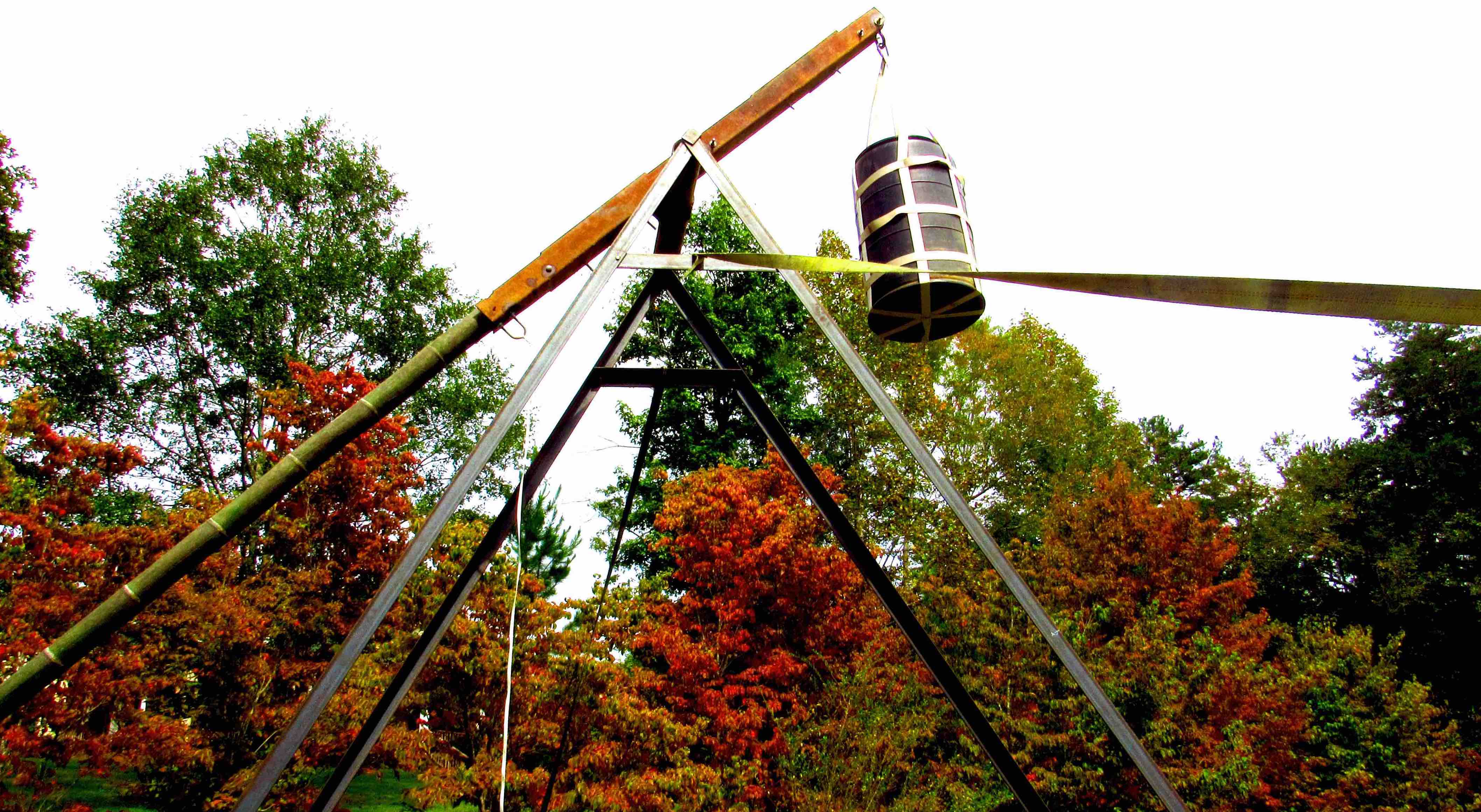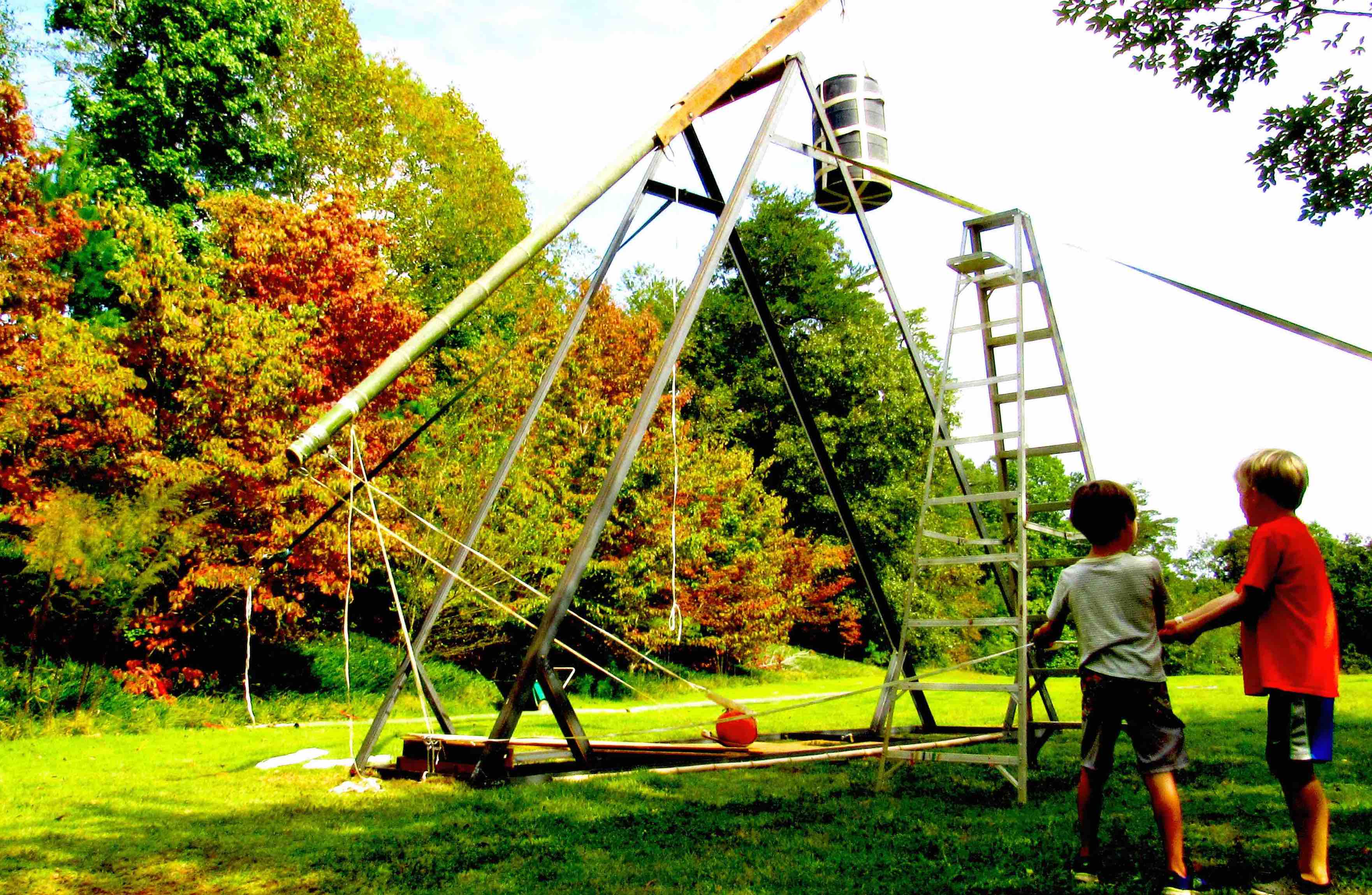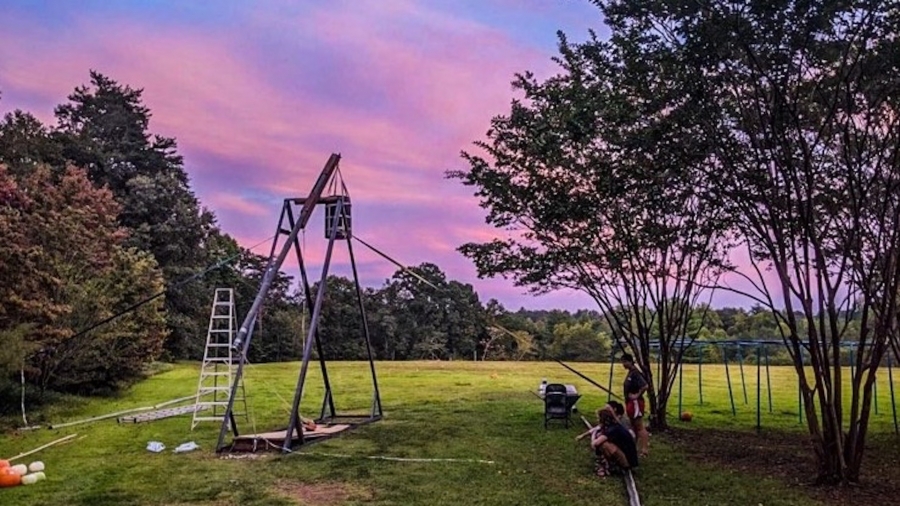The events of this year have made all of us a little stir crazy. Stay at home orders, mask mandates, and fear from Covid-19 infection have put many of us on edge. At Tekoa Foothills, we have implemented strict cleaning protocols, designed all-outdoor family programming activities, and continued to try to serve our community. Many churches are still closed for indoor worship and have limited space for outdoor gatherings. These circumstances catalyzed an exciting summer and remind us that God is faithful, ministry still happens, and joy is alive in the world.
As an extension ministry of the Western North Carolina Conference of the United Methodist Church, Camp Tekoa Foothills, director Jennifer Hampton, and many partner churches and organizations are working diligently to reimagine camp and retreat ministry in the Covid context. I wasn’t present for the conversation, but I am so grateful to Tresca McSwain and the faith community at Myers Memorial United Methodist Church in Gastonia, NC for suggesting this idea.
Myers Memorial is a pumpkin patch church. Proceeds from pumpkin sales support their youth ministry. During a normal year, the church hosts a Fall Fun Day to kick off pumpkin selling season. Due to facility constraints related to the Covid crisis, this year, the church could not host such an event. They asked director Jennifer if they could host their kickoff event here, and mentioned they wanted to throw pumpkins. Of course, Jennifer agreed, cause who doesn’t want to throw a pumpkin? Enter me, dutiful husband, expert on ridiculousness, now tasked with creating such a contraption.
How far should it throw? How big of pumpkins should it throw? These two questions started me down a rabbit hole that’s gotten us here, and the answers are simple. As far as possible. As big as possible. Because why not? Christian hospitality, right? Ask for one mile, go two. Borrow my hat, here’s my coat.
A trebuchet is a medieval throwing device designed for laying siege to a castle or fortified position. It is hard to believe that so many years ago other humans built similar and larger devices with only minimal tools. Having a welder, magnet drill, and sewing machine at my disposal (along with competent volunteer operators!) made our case much easier. Thanks be to God!

Just a few of the working parts to the magnificent device!
This trebuchet consists of the following parts: a frame, pivot, throwing arm, counterweight, sling and pouch, release pin and trigger pin. Shame on me for constructing such a monstrosity without a smaller device for a more hands-on experience. I will be looking forward to that for next year. The frame is built from 3” steel angle. Purchased in 20’ lengths, six pieces were cut to 17.5’. Once assembled into two equilateral triangles, a 7th piece was cut into five 4’ lengths to join the two giant triangles. This provided a pivot height of ~15’. The beam and pivot assembly is constructed from bamboo harvested from the camp and some pieces of scrap metal provided by Foothills Recycling. According to online research, the throwing arm should be positioned over the pivot so that there is a 1:3 ratio short side to long side. In our case, the overall arm length is 20’, short side 5’, long side 15’. Of the components of this contraption, I am most proud of the design of the throwing arm. Since I was not sure if the bamboo would be sufficient to support the weight of pumpkins, the steel part of the arm is fashioned so you can unbolt two clamps and insert a new throwing arm. Over 200 throws in, we have yet to replace the original bamboo throwing arm!

Ready to release the pumpkin!
The next component is the counterweight. According to the internet, maximum distance is achieved when there is a ratio of 1:133, projectile to counterweight. Meaning for a 10 pound pumpkin, I’d need 1330 pounds in the drum. To date, we’ve thrown it with a full drum of water and that sends a pumpkin all the way across the field. Actually it throws it too close to the zipline sending platform. Our trials have shown a ½ drum of water works best. It’s easier to cock the machine and still provides a ~250’ throw.
At this point I must offer accolades to a special volunteer, Darren Hickerson. Of all my contacts, he is the only one who had prior experience building a trebuchet. (He’s built three!) His experience was invaluable from the suggestion to construct a scale model (pictures and dimensions below), and his sewing skills are second to none. In less than two hours he was able to sew the throwing pouch for the sling and the counterweight cradle! I asked for a pouch that would throw any pumpkin from five to fifty pounds and he delivered!
The final components are the release pin and trigger pin. They sound similar, but perform very different functions in trebuchet operation. The trigger pin is simple. When you pull the long side of the throwing arm down, raising the counterweight to cock the machine, the trigger pin is what holds it in the loaded position. Two eye bolts are secured to the bottom of the frame and a trigger rope is threaded through them. A cut-off eye bolt with rope attached is inserted to hold the machine in the cocked position. When you pull that bolt out, the counterweight drops and the machine launches.
The most finicky part of the machine is the release pin. The angle of this pin is what determines when the sling launches the projectile. Minute adjustments greatly affect height and distance. This device was constructed from hose clamps, a bent lag hook, and some tiny conduit clamps. The hose clamps require continual tightening, however, the contraption provides a consistent release.

Can you say pumpkin guts??
Now that you’re an expert on trebuchet construction, please share our joy and gratitude that the machine works and has provided safe and exciting operation. I am committed to building a smaller, hands on model that will allow you to manipulate the inputs and offer a more interactive experience. I am blessed to be here and to offer such ridiculousness to all. This endeavor has made apparent to me that regardless of how cool something looks for our guests, I must offer the same if not more consideration to my family. More than one late night of cyphering, googling, constructing, testing, changing, updating, and head scratching may not have been the healthiest, but if you’ve seen it send a pumpkin across the field, you too may find it worth it. If you’ve seen or experienced the JOY when the pin is pulled then you’ll know that in spite of myself and my own failing, the Spirit is present in this endeavor.
Please check out www.virtualtrebuchet.com. The simulation provided on this website was extremely helpful in the design and construction of this device. As a starting point for your own experimentation, dimensions of both trebuchets are provided in the table below. Happy Day!
|
Pumpkin Chunker |
Scale Model |
|
|
Length of Short Arm |
5’ |
2.5’ |
|
Length of Long Arm |
15’ |
7.5’ |
|
Length of Sling |
14’ |
7’ |
|
Length of Weight |
5’ |
2.5’ |
|
Height of Pivot |
15’ |
7.5’ |
|
Uniform Arm |
Check yes |
Check yes |
|
Mass of Arm |
100 # |
15 # |
|
Mass of Weight |
400# |
35 # |
|
Projectile |
Pumpkin |
Golf Ball |
|
Release Angle |
45 degrees |
45 degrees |
